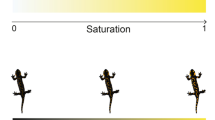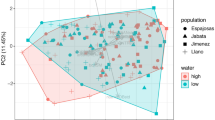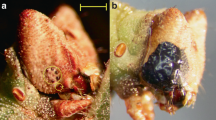Abstract
THE coloration, rate of development and behaviour of the larvae of the armyworm, Leucania separata Walker, differ when the larvae are subjected to different degrees of crowding during development. Active black larvae appear in crowded conditions and develop more rapidly, feed more voraciously, and tolerate starvation and less palatable food-plants better than the sluggish pale larvae that appear in uncrowded conditions. This phenomenon has much in common with phase polymorphism in locusts1.
This is a preview of subscription content, access via your institution
Access options
Subscribe to this journal
Receive 51 print issues and online access
$199.00 per year
only $3.90 per issue
Buy this article
- Purchase on Springer Link
- Instant access to full article PDF
Prices may be subject to local taxes which are calculated during checkout
Similar content being viewed by others
References
Iwao, S., Mem. Coll. Agric. Kyoto Univ., 84, 1 (1962).
Kennedy, J. S. in Physiologie, Comportement et Ecologie des Acridiens en Rapport avec la Phase, 283 (Paris, 1962).
Wellington, W. G., Canad. J. Zool., 35, 293 (1957).
Laux, W., Zeit. Angew. Zool., 49, 465 (1962).
Wellington, W. G., Canad. Entomol., 97, 1 (1965).
Author information
Authors and Affiliations
Rights and permissions
About this article
Cite this article
IWAO, S. Differences in Light Reactions of Larvae of the Armyworm, Leucania separata Walker, in relation to their Phase Status. Nature 213, 941–942 (1967). https://doi.org/10.1038/213941a0
Published:
Issue Date:
DOI: https://doi.org/10.1038/213941a0
Comments
By submitting a comment you agree to abide by our Terms and Community Guidelines. If you find something abusive or that does not comply with our terms or guidelines please flag it as inappropriate.



